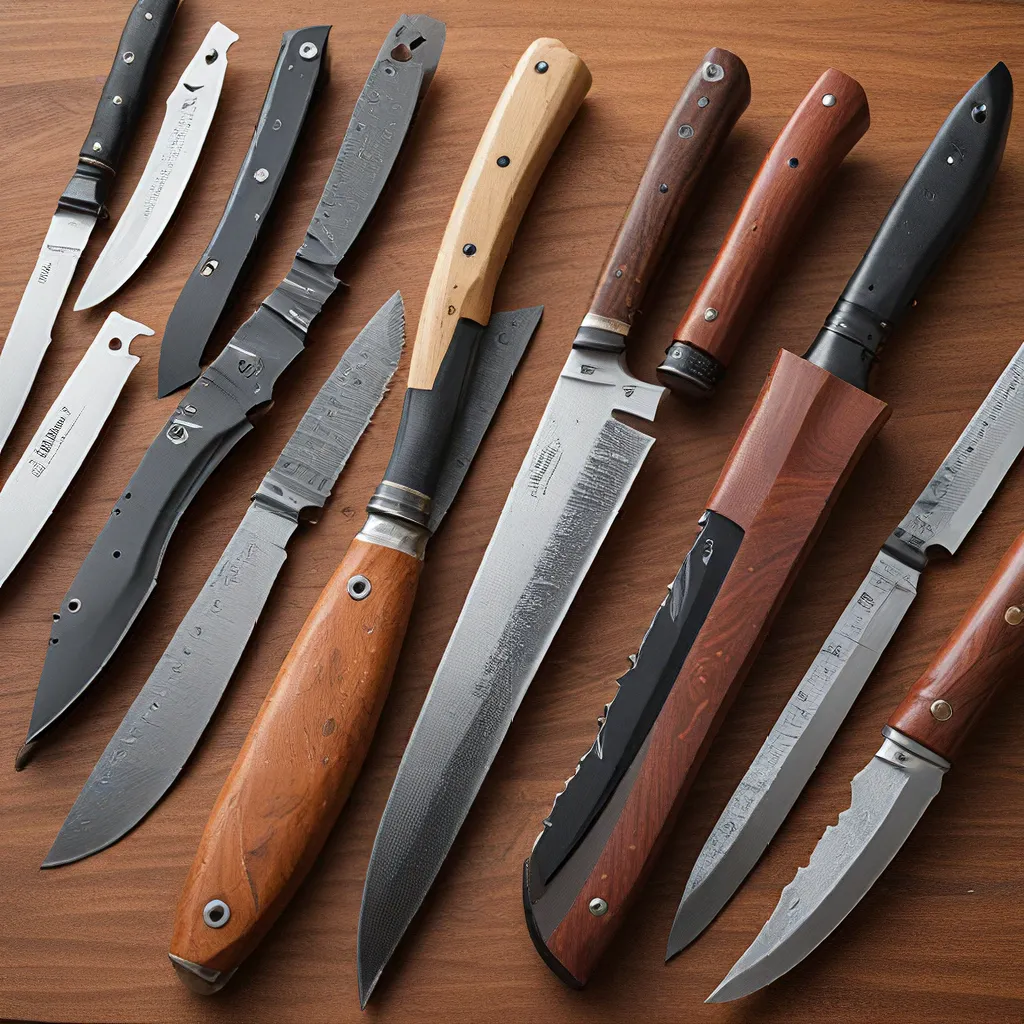
As a self-professed knife enthusiast, I’ve always been fascinated by the art of sharpening. There’s just something captivating about transforming a dull, lifeless blade into a razor-sharp tool that glides effortlessly through even the toughest materials. And when it comes to collectible knives, the stakes are even higher – a properly sharpened blade not only performs better but can also significantly increase the value of your prized possession.
The Importance of Proper Knife Sharpening
I remember the first time I tried sharpening one of my cherished pocket knives. I had just acquired this beautiful vintage folding knife, and I was eager to put it to use. But when I tried cutting through a piece of paper, the blade just seemed to glide over the surface without leaving a mark. Frustrated, I turned to the internet for guidance, and that’s when I discovered the world of professional knife sharpening.
As it turns out, proper knife sharpening is an art form in itself. It’s not just about running the blade across a sharpening stone a few times – it’s about understanding the precise angle, the correct pressure, and the optimal sharpening technique for each type of knife. Neglecting these details can lead to uneven edges, dull blades, and even permanent damage to your prized collectibles.
Mastering the Sharpening Process
After doing a bit more research, I decided to dive in and start learning the art of knife sharpening. I watched countless tutorials, read through forums, and even reached out to some local master sharpeners to get their insights. And let me tell you, it was a steep learning curve!
One of the first things I learned is that there’s no one-size-fits-all approach to sharpening. Different knives require different techniques, and even the same knife may need to be sharpened differently depending on its intended use. For example, a chef’s knife might need a slightly different angle than a pocket knife, and a serrated blade will require a completely different sharpening method than a straight-edged blade.
Through my research, I discovered that the Japanese are particularly renowned for their mastery of knife sharpening. Their traditional techniques, honed over centuries, have produced some of the most highly sought-after knives in the world. And the best of the best are the master sharpeners, who can take a dull blade and transform it into a work of art.
Finding the Right Sharpening Tools
One of the most important aspects of knife sharpening is having the right tools for the job. Over the years, I’ve amassed quite a collection of sharpening stones, honing rods, and other specialized equipment. From high-grit diamond stones to traditional water stones, each tool has its own unique purpose and can produce different results.
| Sharpening Tool | Purpose |
|---|---|
| Whetstone | Effectively removes material from the blade to create a sharp edge |
| Honing Rod | Realigns the edge without removing much material, maintaining sharpness between full sharpenings |
| Diamond Stone | Provides a faster, more aggressive sharpening action than traditional whetstones |
| Ceramic Rod | Offers a gentler sharpening action, ideal for delicate or fragile blades |
But it’s not just about the tools – it’s also about the technique. I’ve spent countless hours perfecting my sharpening skills, experimenting with different angles, pressure, and stroke patterns. And let me tell you, it’s been a journey of trial and error, but one that’s been incredibly rewarding.
Caring for Your Collectible Knives
Of course, knife sharpening is just one aspect of maintaining the value and performance of your collectible knives. Proper storage, handling, and overall care are also crucial. I’ve learned that things like keeping blades clean, oiling the mechanisms, and avoiding moisture or humidity can all play a significant role in preserving the condition of your prized possessions.
And when it comes to sharpening your collectible knives, it’s always best to err on the side of caution. If you’re not confident in your sharpening skills, it might be worth considering the services of a professional knife sharpener like the ones at Herman Knives. Their expertise and specialized tools can ensure that your knives are sharpened to perfection without risking any damage.
The Joy of Sharpening
Ultimately, the art of knife sharpening is about more than just maintaining the functionality of your blades. It’s about connecting with the history and craftsmanship of these tools, and finding a sense of satisfaction in transforming a dull edge into a razor-sharp, high-performing instrument.
As I’ve delved deeper into the world of collectible knives and sharpening, I’ve been in awe of the skill and dedication of the master sharpeners who have honed their craft over decades. Their ability to coax out the full potential of a blade is truly remarkable, and it’s something I’m constantly striving to emulate in my own sharpening practice.
So, whether you’re a seasoned collector or just starting to explore the world of fine knives, I encourage you to embrace the art of sharpening. It’s a journey that’s sure to be filled with challenges, surprises, and a whole lot of satisfaction. And who knows – with a little practice, you might just discover a hidden talent for transforming dull blades into true masterpieces.
After all, as the saying goes, a sharp knife is a happy knife – and a happy knife is a joy to use.

